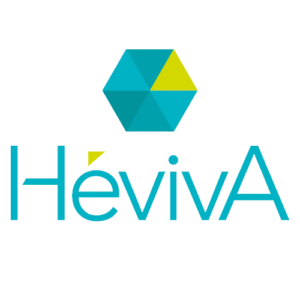FIFO vs LIFO differences, examples, and formulas for 2025
Get free guides, articles, tools and calculators to help you navigate the financial side of your business with ease. Inventory is valued at cost unless it is likely to be sold for a lower amount. In the first example, we worked out the value of ending inventory using the FIFO perpetual system at $92.
FIFO vs. LIFO: What is the difference?
If you operate a retailer, manufacturer, or wholesale business, inventory may require a large investment, and you need to track the inventory balance carefully. Managing inventory requires the owner to assign a value to each inventory item, and the two most common accounting methods are FIFO and LIFO. Though both methods are legal in the US, it’s recommended you consult with a CPA, though most businesses choose FIFO for inventory valuation and accounting purposes. It offers more accurate calculations and it’s much easier to manage than LIFO. FIFO also often results in more profit, which makes your ecommerce business more lucrative to investors.
Accurate COGS recording is also critical for tax reporting, as it directly affects taxable income. Overstating COGS can underreport taxable income, risking penalties, while understating it could lead to overpaying taxes. Reconciling COGS with inventory records helps businesses avoid such issues and ensures accurate financial reporting. The corporate income taxA corporate income tax (CIT) is levied by federal and state governments on business profits. Many companies are not subject to the CIT because they are taxed as pass-through businesses, with income reportable under the individual income tax.
- In addition, companies often try to match the physical movement of inventory to the inventory method they use.
- Under the LIFO method, assuming a period of rising prices, the most expensive items are sold.
- To find the cost valuation of ending inventory, we need to track the cost of inventory received and assign that cost to the correct issue of inventory according to the FIFO assumption.
- She holds a Masters Degree in Professional Accounting from the University of New South Wales.
- When prices are stable, our bakery example from earlier would be able to produce all of its bread loaves at $1, and LIFO, FIFO, and average cost would give us a cost of $1 per loaf.
- That’s why the FIFO method accurately reflects a business’s production schedule.
Specific inventory tracing
This article explains the use of first-in, first-out (FIFO) method in a periodic inventory system. If you want to read about its use in a perpetual inventory system, read “first-in, first-out (FIFO) method in perpetual inventory system” article. Enerpize is an all-in-one online accounting software designed to streamline financial management for businesses of all sizes. It offers automated bookkeeping, invoicing, expense tracking, and inventory management, making accounting more efficient and hassle-free. The beginning inventory is the total value of goods available at the start of the accounting period.
How does the FIFO method affect financial statements?
Two hundred fifty shirts are purchased, and 120 are sold, leaving 130 units in ending inventory. Assume that the sporting goods store sells the 250 baseball gloves in goods available for sale. All costs are posted to the cost of goods sold account, and ending inventory has a zero balance. It no longer matters when a particular item is posted to the cost of goods sold account since all of the items are sold. FIFO is the most common inventory valuation method, and it’s often preferred because it aligns with the natural flow of goods in many businesses.
With this method, companies add up the total cost of goods purchased or produced during a specified time. This amount is then divided by the number of items the company purchased or produced during that same period. To determine the cost of goods sold, the company then multiplies the number of items sold during the period by the average cost per item. The average cost is a third accounting method that calculates inventory cost as the total cost of inventory divided by total units purchased.
Bench simplifies your small business accounting by combining intuitive software that automates the busywork with real, professional human support. Suppose the number of units from the most recent purchase been lower, say 20 units. We will then have to value 20 units of ending inventory on $4 per unit (most recent purchase cost) and the remaining 3 cash flows from financing activities units on the cost of the second most recent purchase (i.e., $5 per unit). Therefore, the value of ending inventory is $92 (23 units x $4), which is the same amount we calculated using the perpetual method. Now that we have ending inventory units, we need to place a value based on the FIFO rule.
The income approach focuses on matching deductions for costs with the revenues they generate. For example, if a farm invests in a new tractor that it will use for 10 years, it should spread the deductions for that tractor out over the next 10 years. When applying this principle to inventories, companies should deduct the cost of a unit of inventory when it is sold. The company makes a physical count at the end of each accounting period to find the number of units in ending inventory. The company then applies first-in, first-out (FIFO) method to compute the cost of ending inventory. Last in, first out (LIFO) is another inventory costing method a company can use to value the cost of goods sold.
Why is choosing a method of inventory valuation important?
This makes it easier to accurately account for your inventory and maintain proper FIFO calculations. FIFO assumes that the oldest products are sold first, but it’s important to make sure that this practice is actually applied to your warehouse. To calculate the value of inventory using the FIFO method, calculate the price a business paid for the oldest inventory batch and multiply it by the volume of inventory sold for a given period. Using FIFO simplifies the accounting process because the oldest items in inventory are assumed to be sold first. When Sterling uses FIFO, all of the $50 units are sold first, followed by the items at $54. For example, say a business bought 100 units of inventory for $5 apiece, and later on bought 70 more units at $12 apiece.
- Inflation is the overall increase in prices over time, and this discussion assumes that inventory items purchased first are less expensive than more recent purchases.
- To calculate COGS (Cost of Goods Sold) using the FIFO method, determine the cost of your oldest inventory.
- Charlene Rhinehart is a CPA , CFE, chair of an Illinois CPA Society committee, and has a degree in accounting and finance from DePaul University.
- While you don’t want to overreact to short-term fluctuations, you also don’t want high costs to be masked in an overall average.
- Meanwhile, under the LIFO inventory accounting method, it would deduct the cost of the last unit of inventory purchased, namely the unit purchased for $32 in November.
- This is particularly beneficial during inflation, as it aligns the cost of goods sold (COGS) with older, potentially lower-cost inventory, influencing gross margin and net income.
LIFO Pros
The company uses the services of a local vendor that sells cases for $5 per unit. In some cases, a business may use FIFO to value its inventory but may not actually move old products first. If these products are perishable, become irrelevant, or otherwise change in value, FIFO may not be an accurate reflection of the ending inventory value that the company actually holds in stock. We’ll explore how the FIFO method works, as well as the advantages and disadvantages of using FIFO calculations for accounting. We’ll also compare the FIFO and LIFO methods to help you choose the right fit for your small business. Accounting for inventory is essential—and proper inventory management helps you increase profits, leverage technology to work more productively, and to reduce the risk of error.
Average cost inventory
Most businesses use either FIFO or LIFO, and sole proprietors typically use average cost. There are several other methods of inventory accounting, the most common being weighted average cost. When a unit of inventory is sold, companies can deduct the weighted average cost of every unit of inventory held.
While LIFO inventory accounting may be a less widely understood part of the tax code, it is a sound structural component and brings companies closer to deducting their real cost of goods sold (COGS). Ending inventory value impacts your balance accrual basis accounting vs cash basis accounting sheets and inventory write-offs. Having calculated total purchases, sales, and inventory values, you can now calculate COGS and ending inventory values. You started the year with 2,000 widgets in inventory, and purchased an additional 2,000 widgets each month from January 1 through March 31st (for a total of 6,000 widgets).
Methods of calculating inventory cost
In addition, many companies will state that they use the “lower of cost or market” when valuing inventory. This means that if inventory values were to plummet, their valuations would represent the market value (or replacement cost) instead of LIFO, FIFO, or average cost. A company’s recordkeeping must track the total cost of inventory items, as well as the units bought and sold. Specific inventory tracing is an inventory valuation method that tracks the value of every individual piece of inventory. This method is usually used by businesses that sell a very small collection of the difference between calendar year and fiscal year for business taxes highly unique products, such as art pieces.




Laisser un commentaire
Rejoindre la discussion?N’hésitez pas à contribuer !